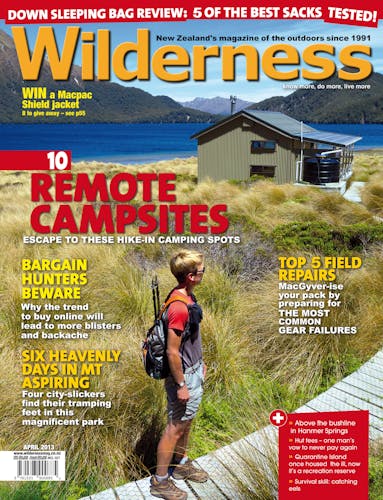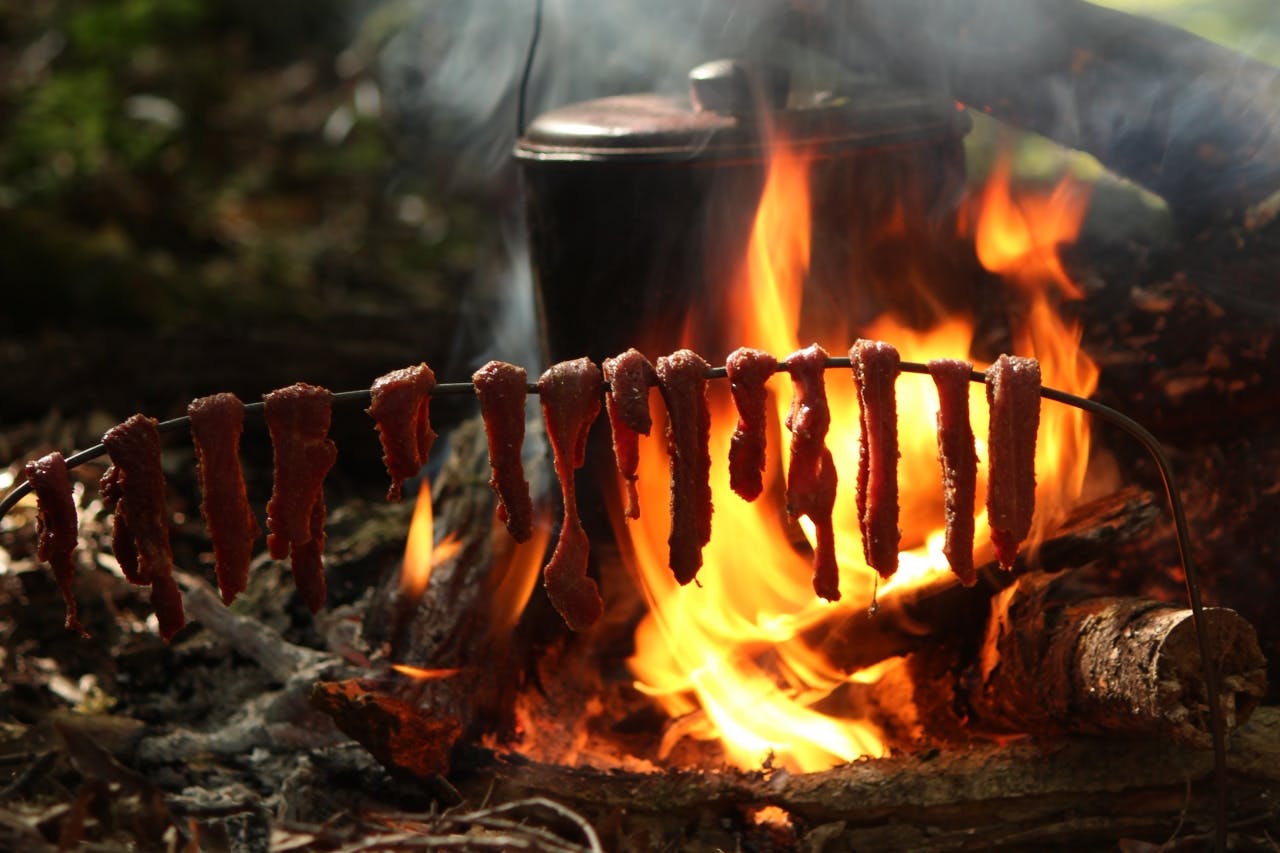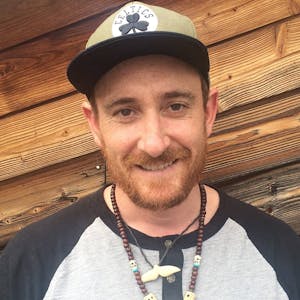During a 200km test of endurance and survival, adventurer Mark Jones received one critical lesson from the New Zealand bush: the forest was on his side.
Spot number 1313 stood forebodingly on the map like the craggy spire it represented. The ominous number suggested “double trouble” to adventurer Mark Jones, casting further doubt on what was rapidly becoming the most gruelling day of his life.
Considering the previous mind and body breaking adventures Jones has undertaken that’s really saying something.
He and mates Marcus Waters and Graham Charles were the first adventurers to kayak 800km along the coast of Antarctica to cross the polar circle. Two years later, in 2003, they kayaked 500km through South America’s notoriously blustery Beagle Channel and into the Chilean fijords. From there they switched paddles for ice axe and crampons and attempted a new route through the Cordillera Darwin mountain range into Argentina. A severe storm confined them to a tent for eight days and finally forced a retreat.
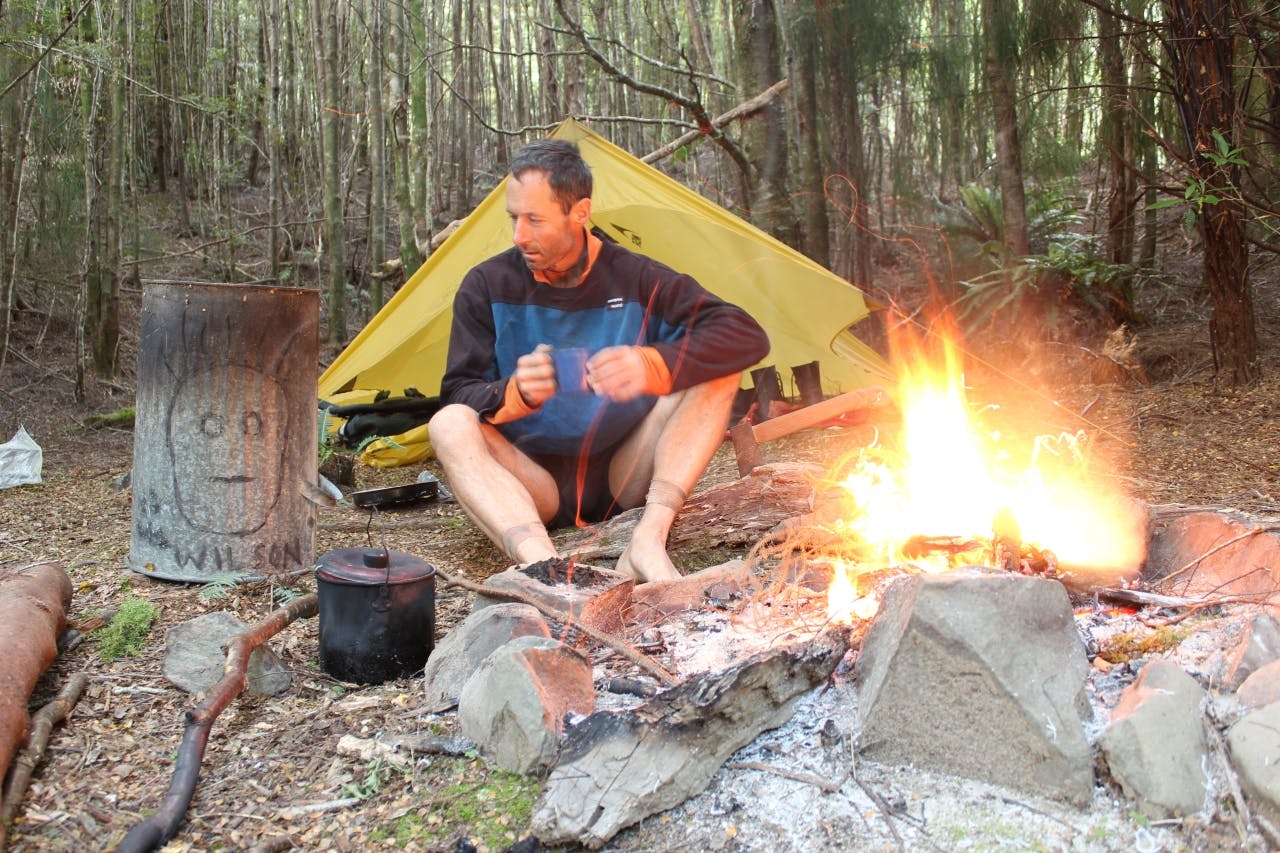
Mark Jones spent 19 days living off the land and tramping 200km off track in the Ureweras. Photo supplied
But even with experience of hardship on his side, Jones found himself stretched to his limits on a solo off-track journey from one side of Te Urewera National Park to the opposite side of Whirinaki Forest Park. All up that’s about 200km.
While scrambling, thrashing and crawling through dense leatherwood up a ridge towards the ominous 1313, he stopped repeatedly from exhaustion and for a pep talk to ward off nagging doubt.
Spot 1313 is about 1.5km north of the aptly named Maungataniwha, the second highest peak in the Ureweras. The two names seemed to offer a warning to Jones: this is not a place to take lightly, human.
Not usually a superstitious person, the “spookiness” of the previous days of his journey made him ready for anything.
Only a couple of hours earlier, while trying to find a route across the main range separating the Urewera and Whirinaki bush, he’d slipped and landed heavily against a rock, severing one of his fingertips.
“I had some tough psychological battles carrying on because it was thick, steep and desperately scary,” Jones says about his climb towards 1313. “I was making really fine judgements about which foot placements were going to hold my weight and which wouldn’t and I realised after a while there was no way I could turn back – I was committed.
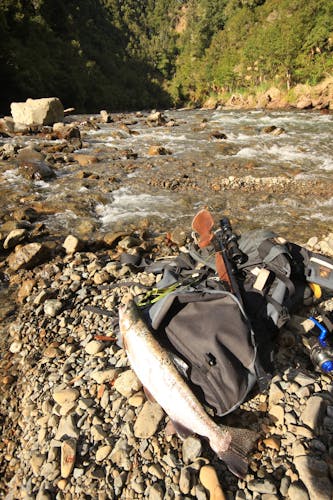
Jones caught trout to supplement his meagre diet. Photo supplied
“I knew where I was, but I didn’t know whether [the route] was going to get me across.”
It might have been a bit easier if he’d had a good feed over the previous 16 days.
But this wasn’t an ordinary trip; he didn’t have any dehydrated meals to look forward to, no energy bars or chocolate to snack on, no cups of soup to cheer him or pasta and tuna to tuck into. The only meal time accompaniments Jones packed for his journey were salt and pepper.
Everything else he had to kill or forage on the way.
This explains why he was so utterly exhausted while crashing his way to 1313.
Now, looking back on his ‘Salt and Pepper Hikoi’, Jones says it was the toughest expedition he’s ever done.
A keen hunter, he was searching for a closer, deeper connection with the bush. He wasn’t motivated by trophies, but by an urge to understand what it’s like to become part of the ecosystem and for it to become part of you.
He was inspired by bushcraft master Ray Goldring’s six week stay in the Ureweras in the late 1970s, but over the years something held Jones back.
“It never happened because I knew I could sit somewhere for a while and just exist,” he says. “But then I came up with the idea of doing a really challenging journey and living off the land at the same time.
“I wasn’t sure whether I could do it because of the huge amounts of energy I would need.”
Jones had envisioned the bush providing a smorgasbord of wild delights. He’d dreamed about dining on forest berries, fern shoots, supplejack and nikau flowers.
He saw himself stretched out before a warm camp fire, sipping kawakawa tea, feeling as nourished and satisfied as a fat kereru during a mast season.
From the very first day he realised his dreams were delusions.
Carrying a pack, fishing rod and rifle, he set off at 4pm from Wairata on SH2, on a mission to locate dinner.
He hoped to find either road kill to use as bait to catch an eel or to shoot a rabbit or two. He saw neither.
Then he noticed the fern shoots and supplejack were long gone and the berries were between seasons.
“It wasn’t quite the bounty of my musings,” he says.
Walking on, he passed one laden blackberry bush that offered a welcome snack. He then picked bunches of watercress from a small creek.
Shortly after he very nearly disregarded a dead baby silvereye, but seeing its potential he picked it up and put it in his pack in case it would come in handy later.
By 8pm Jones was tired and hungry. He decided to make camp for the night on a rocky ledge above the Waioeka River
Before doing so he baited a hook with the breast of the silvereye, tossed it into an eddy and tied it to a branch.
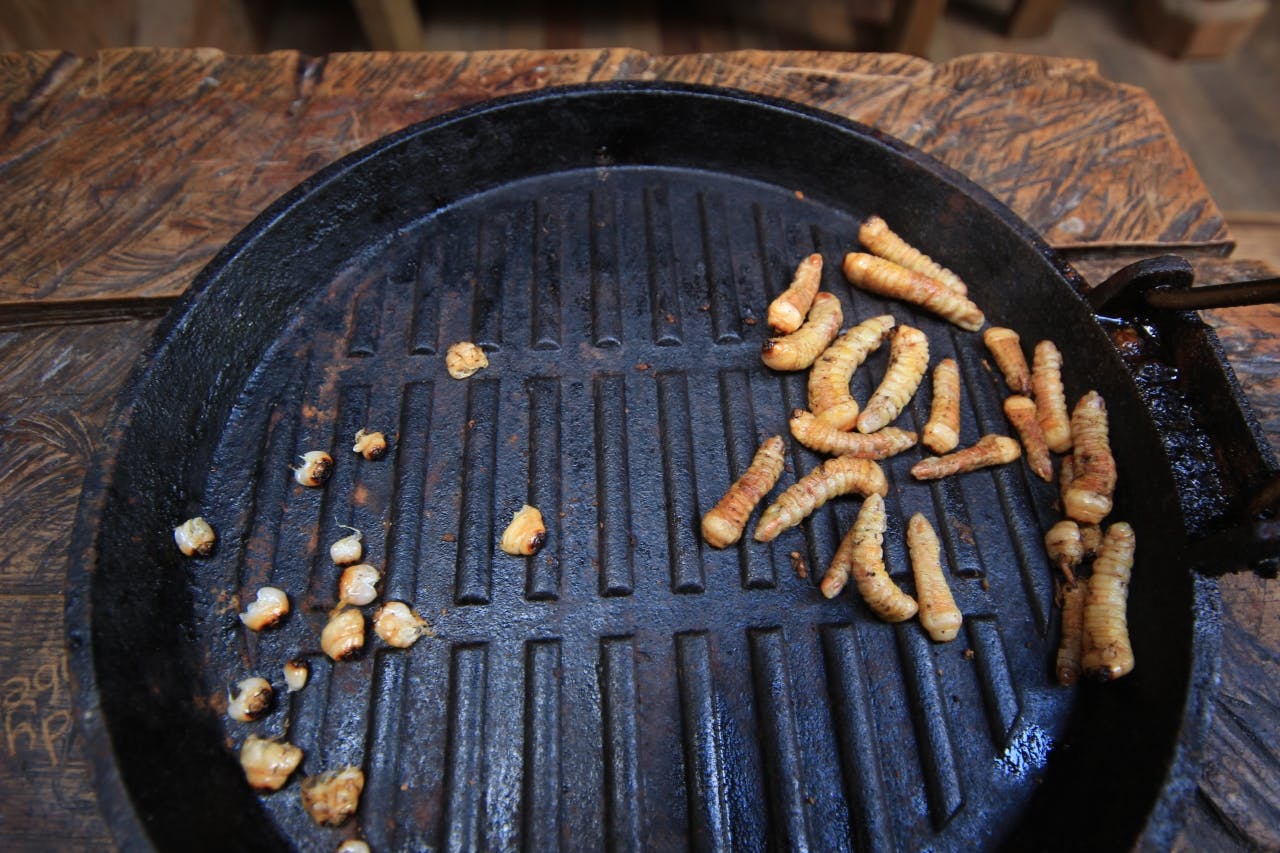
Huhu grubs provided much-needed fat. Photo supplied
After erecting his fly and lighting a fire, he checked the line and found a big eel thrashing at the end of it. He pulled the slippery creature onto the rocks and beat it to death with a rock. “A more primal scene I couldn’t imagine,” he recalls.
But Jones had learned an important lesson about bush survival. “Take every advantage,” he says, “don’t turn your nose up at any opportunity because it may well be the only one.”
Next to his campsite Jones also found a mamaku fern with a new frond on offer. Meat, greens and carbs – his first day foraging had gone well.
On day two he continued up the Waioeka Gorge and, running out of eel, shot a young stag. With more meat than he could consume in a week, Jones smoked as much as he could carry and ate as much again over the following 36 hours.
He’d hoped the meat would give him enough energy for the tramping to come. But while ascending forest-clad hills – tougher and more rugged than he anticipated – Jones found himself struggling. At first he thought his fitness was to blame. However, he soon realised his bush tucker wasn’t providing enough energy.
“A predominantly protein diet simply didn’t deliver energy fast enough,” he says. “What I needed was fats and carbs, but the deer carried less fat than a musterer’s dog and quality carbs were hard to come by.
“Once you get above 500m you’re out of the mamaku zone and there’s a lot of Ureweras above 500m. Above 800m you lose the option of tawa kernels. Then you’re left with beech forest and the only carbs I found there was mountain cabbage which has the same [nutritional] quality as [garden] cabbage.”
Ray Goldring, 68, took a different approach to surviving his six weeks in the Urewera bush. He spent his days killing and eating possum.
Just out of the army, Goldring, 21, was fit and strong and wanted to test himself. With survival and first aid kits, a .22 with 10 rounds, a billy, hunting knife and a poncho he disappeared into the Ureweras and set up camp at the lower head-waters of Te Hoe River.
Unlike Jones, he remained close to his camp rather than travelling and lived mainly on possum and eel.
He set snares to catch possum or they’d wander into his camp and meet a grisly end.
“Deer is all very well, but possum is better because it has a much higher fat content and the oil in them is a good energy metaboliser,” Goldring says.
Possum, eel, pig, goat, trout and huhu grubs are all good sources of energy, he says. By and large, however, carbohydrates are in short supply in the New Zealand bush.
Plants like astelia, fuchsia, hen and chicken fern, karamu and supplejack provide some nourishment, but it’s not enough to survive on.
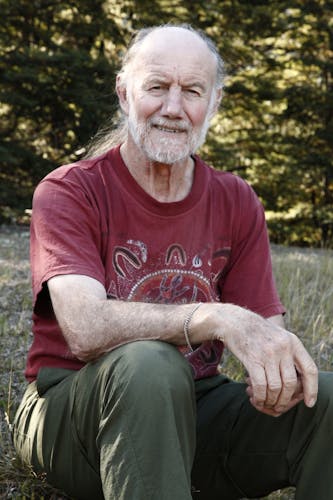
Ray Goldring spent six weeks in the Urewera bush, living off possum and eel. Photo supplied.
“It’s not all to do with energy,” Goldring says, “but about maintaining the body functions because you can end up with scurvy and other problems if you don’t get the [right nutritional] input.
“The amount of energy you get from [plant matter] is not a great deal. You can get most of that from possum and eel anyway, but to survive in the bush you’d still need to spend a couple of hours a day foraging for vegetation.”
Retired Otago University botanist Alan Mark doubts anyone could survive off plant matter in the bush because compared to other countries New Zealand has little in the way of edible native plants. The most critical review Mark has ever written was of author Andrew Crowe’s book A Field Guide to Native Edible Plants in New Zealand.
Mark says the book is unrealistic. “In my review I recommended that if you got lost in the bush with that book in your pack you’d better start chewing on it,” Mark says. “[Crowe] was pushing water uphill to claim there was even enough to get by on, which is what he was implying.
“The animal life in the bush is probably more sustaining than anything in the plant world.”
With the benefit of hindsight, Jones says he’d do things differently if he did another similar expedition. He’d leave his rifle at home, which proved cumbersome and heavy, and focus on trapping and fishing.
However, despite the lack of carbohydrates in his diet, Jones made slow, but steady progress across the Ureweras.
His legs felt leaden on the many hills and on day nine, to lighten his load, while walking Waikaremoana Road he gave a passing DOC ranger gear he didn’t need. Maps, dead camera batteries, a plate and spoon, water bladder, a meat safe, and tomahawk were obvious dead weights, but as he felt his pack lighten he decided to go one step further.
“The feeling of shedding gear was so liberating I made a snap decision to live even closer to the land and to travel lighter, much lighter,” he says. “I hefted my fly and sleeping bag into the ute and rationalised I could do without them both.”
The DOC ranger told him the forecast was fine for the foreseeable future which added to his confidence.
That night, while Jones bivvied on a bed of moss, it rained for the first time and a southerly blew in. He used his polythene groundsheet as a fly and woke up dry, but cold.
The decision had its disadvantages, but for Jones these were outweighed by the result – a closer communion with nature.
Four days later, on day 14, he experienced the high point of the trip while feasting on trout and huhu at Te Waiotukapiti Hut.
By this time, the communing with nature was taking a turn towards the spooky. Jones had heard stories about mysterious happenings other people claim to have experienced in the Urewereas, such as rivers running red with blood and the appearance of spectres that look like humans, but aren’t.
The bogeyman didn’t pay a visit to Jones, but he says the forest itself began communicating with him.
On a day he desperately needed more carbs he decided to break one of his rules and kill a mamaku tree for its pith. He found a young mamaku and asked the forest if he could have it. As he stepped towards the tree after his prayer, a big rock fell on one of his feet, crushing it, and revealing the biggest water spider Jones had ever seen.
Taking this as a big no from the forest, he looked for another one and spotted a dying mamaku growing from the side of a cliff. He found his way up to it and cut it down.
It landed in an easily accessible pool within a raging river.
“I didn’t expect an answer to my question, but I certainly felt like I got one,” Jones says. “One of the things I felt quite strongly very early was another conscious entity was assisting me along the way.
“I felt like there was a two-way communication between me and the forest. It was spooky.
“There were times, for example, when I needed deer and a deer would come.”
For Jones, this connection with the forest was an unexpected learning and one that’s made him more curious than he was before the trip. He wants to see if he can experience this again to test whether it was just a one-off experience or something that can be replicated and deepened.
He wonders whether Aborigines, Maori and other indigenous groups have a metaphysical relationship with the natural world that white boys like him can only guess at.
“When you’re out there living entirely off the bush you’re eating things that are becoming part of your body, part of you, so you can’t help but become more connected.”
After bush bashing for the best part of a day, he finally crossed 1313 and arrived in the Mangakahika catchment with two hours of daylight left.
He’d hoped to reach Mangakahika Hut, but with the darkness deepening he camped by a small creek and cooked a trout he’d caught on the way.
“I realised I didn’t need the hut and it didn’t much matter where I was,” Jones says. “I had food, water, warmth, and a place to lay my head.
“Life gets that simple when the chips are down.”
A few days later, as the end of his trip drew near, Jones found a bottle of merlot lying in a bush and drank it that night with dinner. He took it as another spooky gift from the forest.
“I always felt like the forest was on my side, that if I respected the forest, the forest would look after me,” he says. “If I’d had a different attitude it might not have turned out the way it did.”





